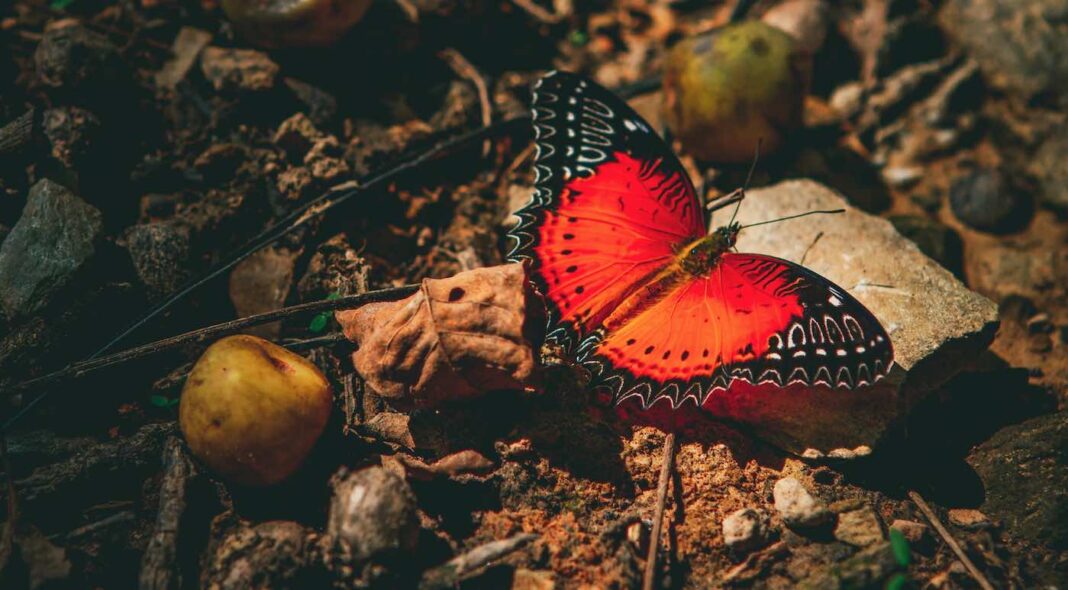Secret of How Butterfly Wings Get Their Vibrant Colors Is Discovered
Introduction
Butterflies are known for their beautiful and vibrant colors that adorn their wings. These colors are not produced by pigments like those found in most animals, but rather by the microscopic structure of their wings. For years, scientists have been trying to unravel the mystery of how butterflies achieve such stunning colors. Recently, a breakthrough discovery has shed light on the secret behind these vibrant hues.
The Discovery
A team of researchers from the University of Cambridge and the Smithsonian Tropical Research Institute conducted a study on the wings of the morpho butterfly, known for its brilliant blue color. Using high-powered microscopes and advanced imaging techniques, they were able to observe the microscopic structures that create the butterfly’s color.
They found that the wings of the morpho butterfly are covered in tiny scales, each with ridges and holes that interact with light in a unique way. These ridges are spaced exactly right to interfere with light waves and create the vibrant blue color that we see. The researchers also discovered that the scales are made of chitin, a material commonly found in insect shells, which helps to enhance the color effect.
How It Works
The vibrant colors of butterfly wings are created through a process called structural coloration. This means that the colors are not produced by pigments, but rather by the way light interacts with the microscopic structures on the wings. When light hits the wings, it is scattered and reflected by the ridges and holes on the scales, creating the vibrant hues that we see.
Unlike pigments, structural colors are not affected by fading or wearing off over time. This is why butterfly wings retain their vibrant colors even after the butterfly has passed away. The structures on the wings are so precise and delicate that they can produce a range of colors depending on the angle of light hitting them.
Implications of the Discovery
Understanding how butterflies achieve their vibrant colors has implications beyond just aesthetics. Researchers believe that the same principles could be applied to develop new materials and technologies, such as color-changing fabrics or coatings. By mimicking the structures found on butterfly wings, scientists could create new ways to manipulate light and color in various applications.
This discovery could also have implications for conservation efforts. Butterflies are important pollinators and play a crucial role in ecosystems. By understanding how their colors are created, scientists may be able to better protect and preserve butterfly populations in the wild.
Conclusion
The secret of how butterfly wings get their vibrant colors has long been a mystery, but thanks to the recent discovery by a team of researchers, we now have a better understanding of the intricate structures that create these stunning hues. By unraveling this mystery, scientists have opened up new possibilities for developing innovative materials and technologies, as well as improving conservation efforts to protect these beautiful creatures.
FAQs
What other butterflies exhibit structural coloration?
Many butterfly species exhibit structural coloration, including the blue morpho, the peacock butterfly, and the green swallowtail. These butterflies all use microscopic structures on their wings to create vibrant colors without pigments.
How do structural colors differ from pigment colors?
Pigment colors are produced by absorbing certain wavelengths of light and reflecting others, while structural colors are created through the interaction of light with microscopic structures. Structural colors are often more vibrant and resistant to fading than pigment colors.
Can the discovery of butterfly wing colors be applied to other materials?
Yes, the principles behind how butterfly wings create their vibrant colors could be applied to develop new materials and technologies, such as color-changing fabrics or coatings. By mimicking the structures found on butterfly wings, scientists could create innovative ways to manipulate light and color.




